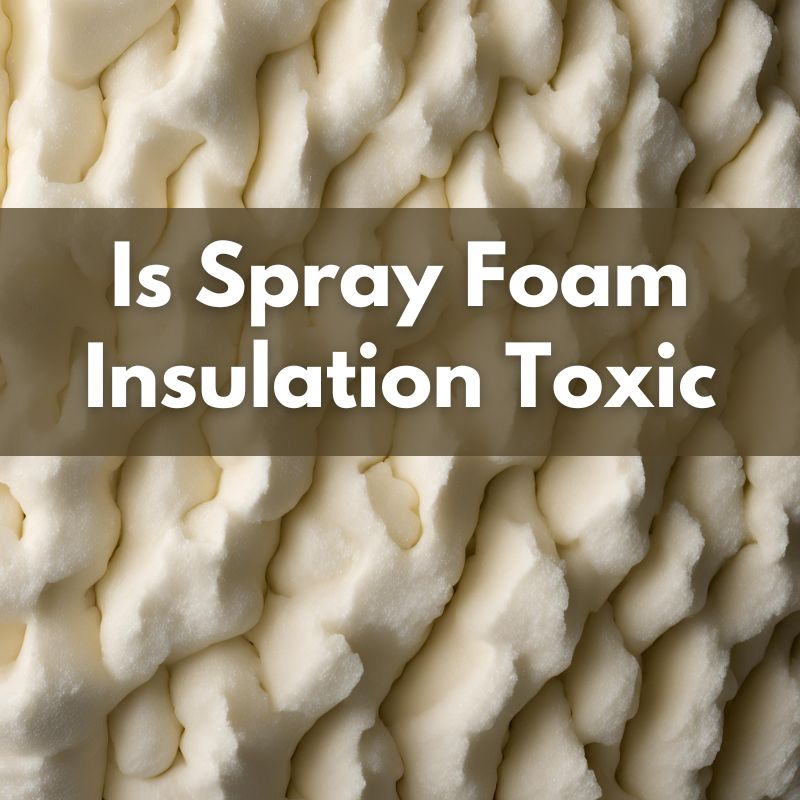
Is Spray Foam Insulation Toxic?
Spray foam insulation is a popular choice for insulating homes and buildings due to its effective thermal and air-sealing properties. However, concerns about its safety and potential toxicity have been raised, particularly regarding the chemicals used in its application and their effects on health. Understanding the potential risks and safety measures can help you make informed decisions about using spray foam insulation.
What is Spray Foam Insulation?
Spray foam insulation is made from a mixture of chemicals that expand when sprayed, forming a foam that adheres to surfaces and fills gaps. There are two main types of spray foam insulation:
- Open-Cell Foam: Lightweight and flexible, used for interior insulation and air sealing.
- Closed-Cell Foam: Denser and more rigid, providing higher insulation value and moisture resistance.
Potential Toxicity Concerns
**1. Chemical Ingredients:
- Isocyanates: Spray foam insulation contains isocyanates, which are chemicals that can be hazardous when inhaled. During application, these chemicals react with other components to form the foam. Prolonged exposure or high concentrations can cause respiratory issues, skin irritation, and other health problems.
- Flame Retardants: Some spray foams contain flame retardants, which can also pose health risks if not handled properly.
**2. Application Risks:
- Fumes and Off-Gassing: During and shortly after application, spray foam insulation can release fumes and volatile organic compounds (VOCs) into the air. These can cause short-term health effects such as headaches, dizziness, and respiratory irritation. Proper ventilation is essential during and after application to minimize exposure.
- Proper Curing: Spray foam must fully cure to become safe. The curing process can take several hours to a few days, depending on the product and environmental conditions. During this time, it is important to avoid exposure to the area.
**3. Health Effects:
- Respiratory Issues: Exposure to spray foam chemicals, particularly isocyanates, can lead to respiratory problems, including asthma-like symptoms, coughing, and difficulty breathing.
- Skin and Eye Irritation: Direct contact with wet spray foam can cause skin irritation, rashes, or eye irritation. Ensure appropriate protective gear is worn during application.
**4. Long-Term Safety:
- Post-Curing Safety: Once fully cured, spray foam insulation generally poses minimal risk. The risk of toxicity significantly decreases after the foam has hardened and the off-gassing process is complete. However, it is still important to ensure that the insulation was applied correctly and that the area is properly ventilated.
Safety Measures and Recommendations
**1. Professional Installation:
- Hire Professionals: Use certified and experienced professionals for spray foam installation. They are trained to handle the chemicals safely and ensure proper application and curing.
**2. Ventilation:
- Ensure Adequate Ventilation: Provide good ventilation during and after the application of spray foam insulation. Open windows and use fans to help disperse any fumes or VOCs.
**3. Protective Gear:
- Wear Safety Gear: During application, installers should wear appropriate personal protective equipment (PPE), including masks, gloves, and goggles, to minimize exposure to chemicals.
**4. Follow Manufacturer Instructions:
- Adhere to Guidelines: Follow the manufacturer’s instructions for application, curing times, and safety precautions. This helps ensure that the product is used safely and effectively.
**5. Post-Installation Monitoring:
- Check for Issues: After installation, monitor the area for any signs of improper curing or persistent odors. Address any concerns promptly to ensure a safe environment.
Conclusion
Spray foam insulation can be a highly effective solution for improving energy efficiency and comfort in buildings. While it has potential toxicity risks due to the chemicals involved, these risks can be managed with proper handling, application, and ventilation. Ensuring professional installation and adhering to safety guidelines can help mitigate health concerns. For more information on safety practices and health-related topics, visit News Gutter, your trusted source for valuable insights and updates.
